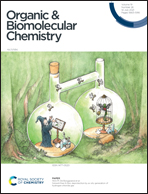Carbon dioxide based methodologies for the synthesis of fine chemicals
Abstract
Rapid environmental changes triggered by the increase in the concentration of heat-absorbing gases such as CO2 in the atmosphere have become a major cause of concern. One of the ways to counter this growing threat will be to efficiently convert atmospheric CO2 into value-added products via the development of efficient transition-metal-catalyzed processes. Conversion of CO2 into bulk products such as CH3OH and methane as well as its incorporation into commercial polyurethane synthesis has been achieved and reviewed extensively. However, the efficient transformation of CO2 into fine chemicals and value-added chemicals has many fold advantages. Recent years have seen a rapid rise in the number of metal-mediated protocols to achieve this goal of converting CO2 into fine chemicals. These are essential developments given the requirement of several commodities and fine chemicals in various industrial processes and the utilization of atmospheric CO2 will help provide a sustainable solution to the current environmental problems. Accordingly, we present here a comprehensive compilation of catalytic processes, involving CO2 as the C1 source for reacting with substrates such as alkanes, alkenes, alkynes, amines, acid chlorides, alcohols, allyl boronates, alkenyl triflates, and many others to provide easy access to a wide variety of useful molecules. Such a technology would certainly prove to be beneficial in solving the problems associated with the environmental accumulation of CO2.

- This article is part of the themed collection: Catalysis & biocatalysis in OBC


 Please wait while we load your content...
Please wait while we load your content...